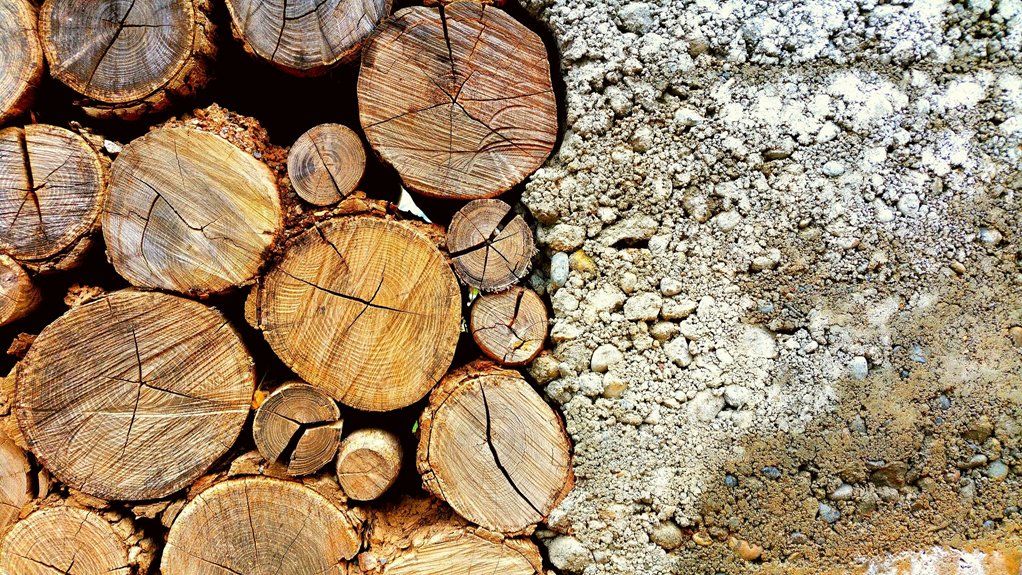Timber is a widely favoured option for concrete formwork due to its affordability, versatility, and reusability. Common types include plywood and laminated panels, which offer water resistance and a smooth finish. Suitable species such as pine, spruce, and cedar are selected based on their strength and durability characteristics.
Proper maintenance is essential to extend the lifespan of timber formwork. This includes storing the panels in dry areas and conducting regular inspections to identify any wear or damage.
Exploring various panel types and care methods can significantly enhance the performance and efficiency of concrete formwork, ensuring that construction projects are completed to a high standard while optimising resources.
Types and Materials of Timber Formwork
Timber formwork is available in various types and materials, each tailored to accommodate specific construction requirements.
Three-ply solid wood panels are constructed from laminated layers of pine or spruce, enhanced with a melamine resin coating for increased water resistance and durability. This coating helps extend the lifespan of the panels, making them more suitable for repeated use.
Film-faced plywood boasts a waterproof surface that delivers smooth concrete finishes and can be reused effectively with proper maintenance.
Melamine-coated plywood provides improved stability and can withstand multiple uses thanks to its resin treatment.
MDO and HDO plywood feature overlays that enhance moisture resistance and toughness, making them ideal for several castings.
Engineered wood formwork, crafted from laminated veneer lumber such as LVL or glulam, offers superior strength and stability.
These materials are selected based on the specific needs of the project, carefully balancing factors such as durability, reusability, and cost.
Common Timber Species and Their Uses
Different types of timber species are selected for formwork based on their specific properties and intended use.
Pine is popular for its availability, affordability, and ease of shaping, making it a standard choice for temporary forms.
Spruce is valued for its straight grain, light weight, and resistance to splitting, which makes it ideal for framing and sheathing.
Douglas fir offers high strength and stability, rendering it suitable for structural supports and bracing.
Cedar naturally resists decay and insects, making it perfect for use in moist environments.
Cypress is both durable and resistant to decay, often employed in regions with high humidity or for applications in ground contact.
These timber species provide varying benefits, allowing builders to select the most appropriate material for each project’s requirements, ensuring safety, cost-efficiency, and durability.
Panel Types and Structural Applications
Among the various panel types utilised in concrete formwork, each serves specific structural applications based on their design and material properties.
Three-ply shuttering panels offer durability and stability for repeated use, effectively supporting heavier loads. Film-faced plywood provides a smooth surface finish and water resistance, making it ideal for projects that require multiple reuses. These panels can be used up to 40 times, depending on handling and maintenance.
Melamine-coated plywood enhances durability, resisting water and scratches, while HDO and MDO plywood deliver high-quality concrete finishes, suitable for demanding applications. Plywood types such as Bintangor and Sapele are especially valued for their strength and reliability in various construction scenarios. Plyform panels, including B-B, are engineered for strength and can be reused several times, depending on maintenance.
These panels find use in a range of applications—from small projects with timber formwork to large structures featuring beam or engineered wood formwork—ensuring that the specific needs of each project are met efficiently.
Advantages and Maintenance of Timber Formwork
Planting the advantages of timber formwork begins with its cost-effectiveness and flexibility, making it a popular choice in construction projects across the UK.
Timber is generally more affordable than steel, aluminium, or plastic, particularly since it’s locally sourced and easy to modify. Its lightweight nature allows for easier handling and swift installation, reducing both labour and equipment requirements.
The charm of timber lies in its adaptability; it can be cut and shaped to fit intricate designs and can be easily adjusted on-site to accommodate evolving plans. Proper maintenance extends its usability, ensuring safety and durability.
Regular inspections for warping, splits, or rot are essential for maintaining strength. Additionally, cleaning and applying protective coatings can prevent moisture damage and reduce concrete adhesion. Storing timber in dry, ventilated areas further preserves its lifespan, ensuring it remains a reliable choice for construction. Timber’s reusability and renewable nature also contribute significantly to its environmental sustainability, making it an eco-friendly option.
Conclusion
In summary, timber formwork provides a versatile and cost-effective solution for concrete construction in the UK. Various types and materials, such as plywood or softwood, cater to different structural requirements. Choosing the appropriate species and panel type enhances work quality and durability. Proper maintenance can extend the lifespan of timber formwork, leading to reduced costs over time.
Understanding these elements enables construction professionals to utilise timber formwork efficiently, ensuring the creation of safe and precise concrete structures while minimising environmental impact.

